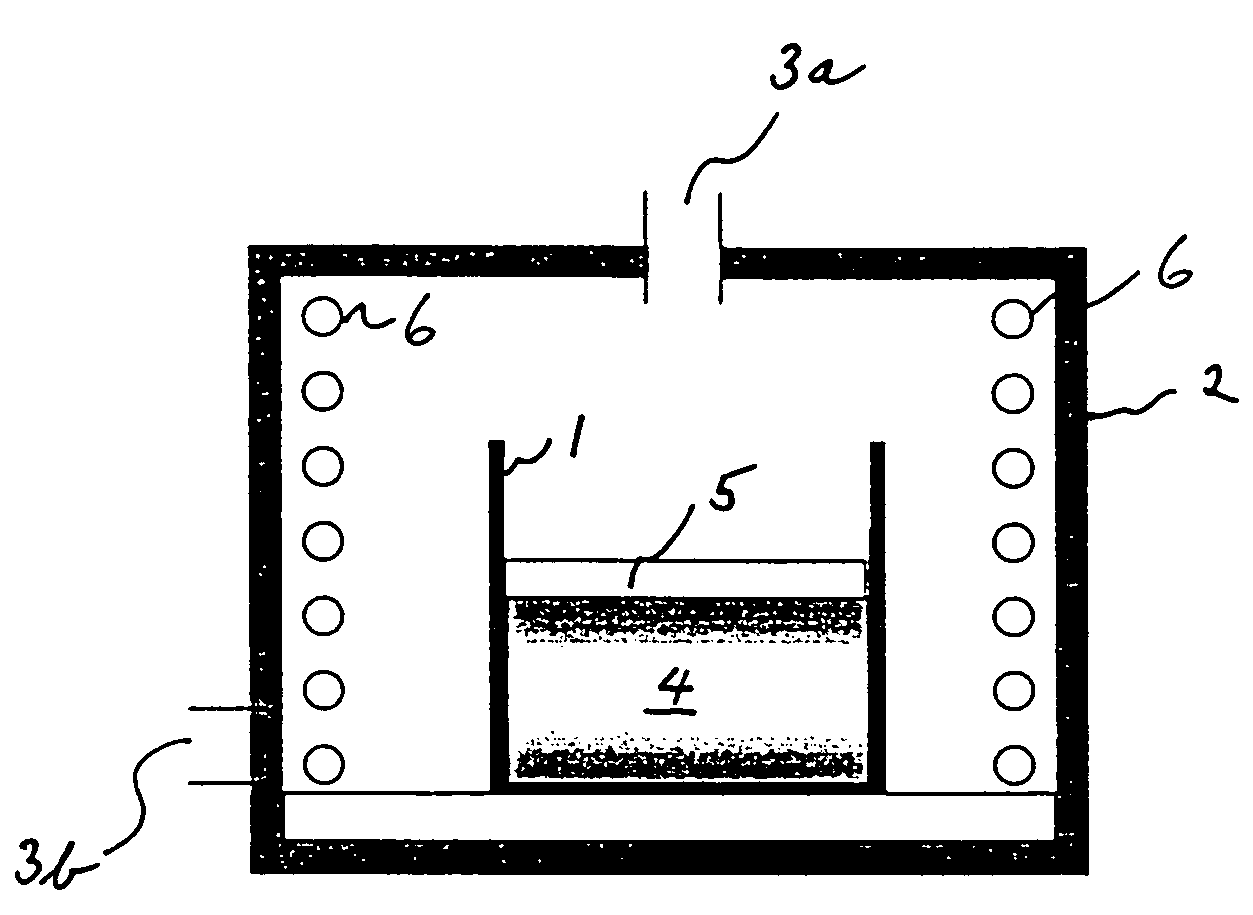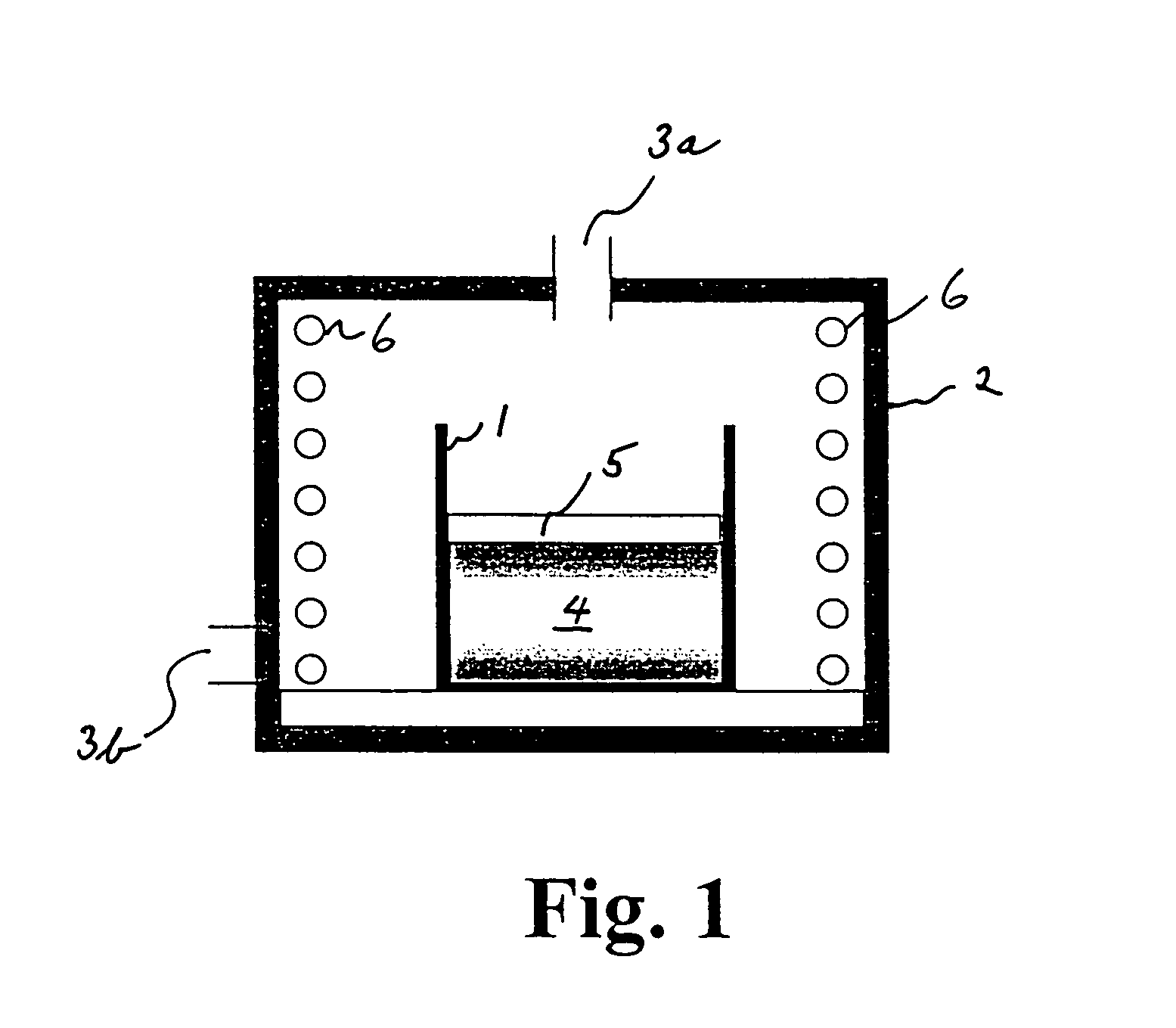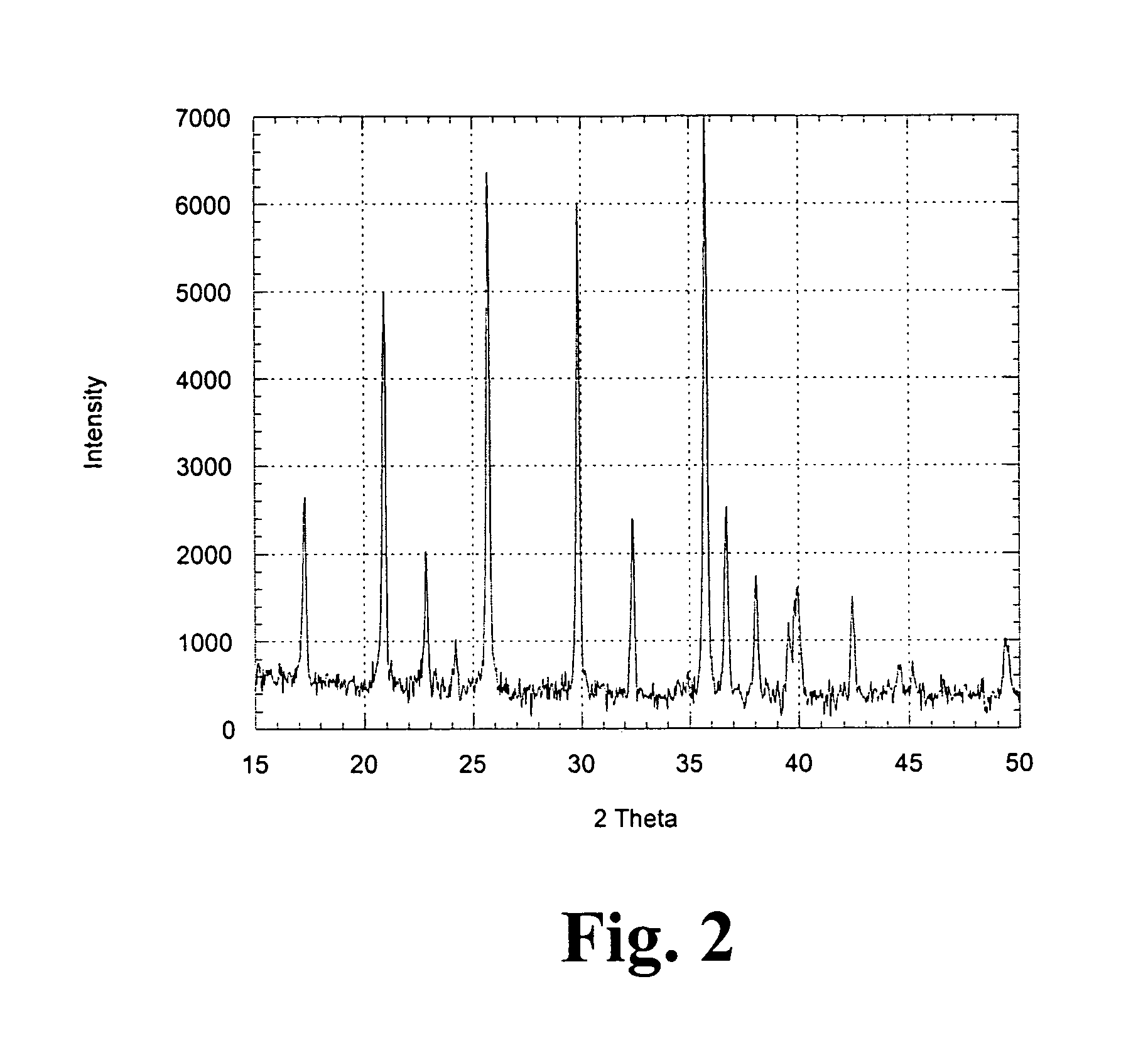Cathode material for Li-ion battery applications
a cathode material and battery technology, applied in the field of cathode materials, can solve the problems of affecting the electrochemical properties of the synthesized material, affecting the production efficiency of the stoichiometric lifepo/sub>4 material, and no prior art teaches how to synthesize, etc., to achieve easy scaling up for commercial applications, easy to synthesize, and excellent cycling behavior
- Summary
- Abstract
- Description
- Claims
- Application Information
AI Technical Summary
Benefits of technology
Problems solved by technology
Method used
Image
Examples
example 1
Synthesis of Conventional Stoichiometric LiFePO4 using Excess Carbon under Inert Atmosphere
[0041]Fe2O3 and Li2CO3 and Super P (carbon black), molar ratio of (1:1:2) were mixed together with the addition of a suitable amount of water to produce a slurry. After mixing thoroughly, the proper Stoichiometric amount of phosphoric acid was added in the solution and extended mixing was utilized. Finally, the slurry was dried in air at 150° C. for 10 hours followed by further heat treatment at 400° C. for 5 hours until chunks of materials were obtained. The as-prepared material was then subjected to grinding and ball milling for about 12 hours.
[0042]Heat treatment for synthesis was conducted in a sealed metallic box with the flow of nitrogen gas. The materials were heat treated at 650° C. for 10 hours under the nitrogen gas flow.
[0043]XRD data is shown in FIG. 2. It is observed that phase pure material can be obtained using the described conventional heat treatment protocol. Battery data (ob...
example 2
Synthesis of LiNi0.92Mg0.08O2
[0044]Stoichiometric amounts of LiOH, H2O, Ni(OH)2 and Mg(OH)2 were mixed in a blender. After 3 hours of mixing, the as-mixed precursor materials were subjected to heat treatment in air at 600° C. for 10 hours. After gentle crushing and sieving, the materials were then heat treated again in oxygen at 700° C. for 24 hours.
[0045]An XRD pattern of the as-synthesized materials is shown in FIG. 4. From FIG. 4 it can be seen that the as-synthesized material is phase pure in nature. This suggests that all Mg cations are dissolved in the LiNiO2 structure. According to the inventor's earlier publication referred to above, the Mg cations are substituting at the transition metal sites.
example 3
Synthesis of Defective Lithium Transition Metal Phosphate Obtained by Incorporating 3 wt % of LiNi0.92Mg0.08O2 and Heat Treating in an Air Environment
[0046]Fe2O3, Li2CO3 and Super P (carbon black), molar ratio of (1:1:2) were mixed together with the addition of a suitable amount of water to produce a slurry. After mixing thoroughly, a stoichiometric amount of phosphoric acid was added to the mixture and extended mixing was utilized. Finally, the slurry was dried in air at 150° C. for 10 hours followed by further heat treatment at 400° C. for 5 hours until chunks of material were obtained. The as-synthesized intermediate material was then subjected to grinding and ball milling with 3 wt % of LiNi0.92Mg0.08O2 prepared as described in EXAMPLE 2, for about 12 hours.
[0047]Synthesis of the material was carried out by heat treatment at 600° C. for 10 hours in the furnace shown in FIG. 1, under air atmosphere.
[0048]XRD data is shown in FIG. 5. The phase pure nature of the material synthesiz...
PUM
| Property | Measurement | Unit |
|---|---|---|
| temperature | aaaaa | aaaaa |
| temperature | aaaaa | aaaaa |
| thickness | aaaaa | aaaaa |
Abstract
Description
Claims
Application Information
 Login to View More
Login to View More - R&D
- Intellectual Property
- Life Sciences
- Materials
- Tech Scout
- Unparalleled Data Quality
- Higher Quality Content
- 60% Fewer Hallucinations
Browse by: Latest US Patents, China's latest patents, Technical Efficacy Thesaurus, Application Domain, Technology Topic, Popular Technical Reports.
© 2025 PatSnap. All rights reserved.Legal|Privacy policy|Modern Slavery Act Transparency Statement|Sitemap|About US| Contact US: help@patsnap.com



